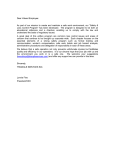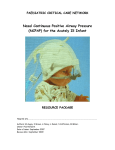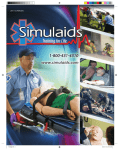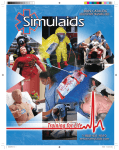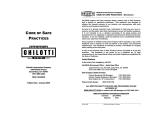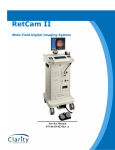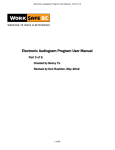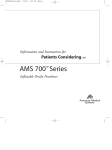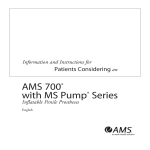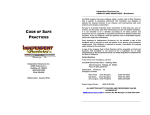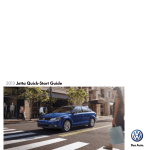Download LESSON 8 - HeartSafe First Aid Training
Transcript
Occupational First Aid Level 2 Training Guide Lesson 8 LESSON 8 OBJECTIVE Each participant will identify circulatory emergencies and manage critical interventions. Each participant will be able to identify and manage environmental emergencies. Each participant will be able to identify common communicable diseases, routes of transmission, prevention of infection in particular of bloodbourne pathogens. The procedures will follow the guidelines in the Occupational First Aid Reference and Training Manual. LESSON OUTLINE cardiac emergencies cardiac emergency management Reference Part 5 Part 5 Part 11 Part 11 Part 13 Chapter 13 Chapter 14 Chapter 37 Chapter 38 Chapter 45 WorkSafeBC (May 2012) non-traumatic cardiac emergencies cardiopulmonary resuscitation heat related emergencies cold injuries communicable diseases page 8-1 Occupational First Aid Level 2 Training Guide Lesson 8 INSTRUCTOR ACTIVITY - LECTURE AS THE WORK FORCE AGES, THE INCIDENTS OF CARDIAC EMERGENCIES WILL BECOME MORE COMMON - RECOGNITION AND PROPER MANAGEMENT MAY SAVE A CO-WORKERS LIFE Cardiac Emergencies heart conditions can result from traumatic or non-traumatic incidents heart conditions include: HEART CONDITIONS Angina Heart attack Cardiac arrest OFA L2 51 angina - the reduction of oxygen to the heart muscle due to a narrowing of the heart’s arteries (coronary arteries) lack of oxygen may cause pain which is referred to as angina pectoris heart attack - the lack of oxygen to the heart muscle due to a complete blockage of a coronary artery (myocardial infarction) cardiac arrest - the heart has stopped beating or beats too irregularly or too weakly to circulate blood effectively causes include: - cardiovascular disease - most common cause blunt trauma/violence to the chest severe blood loss drowning suffocation certain drugs electric shock stroke or other types of brain damage WorkSafeBC (May 2012) page 8-2 Occupational First Aid Level 2 Training Guide Lesson 8 Angina signs and symptoms may vary from person to person but, for each individual, the pain is of consistent intensity, duration and location signs and symptoms of angina include: ANGINA - SIGNS & SYMPTOMS Pain often eases with rest, O2 or medication usually lasts less than 15 minutes Nausea Apprehension or uneasiness Pallor Shortness of breath OFA L2 52 pain may occur suddenly or gradually usually located beneath the sternum may radiate in left or right arm, neck, jaw or back often assumed to be indigestion (gas, belching) described as mild to moderate heavy pressure, squeezing or vice-like tightness not influenced by deep respiration, coughing or movement usually brought on by stress or exertion often eased by rest, oxygen or medication usually lasts less than 15 minutes nausea apprehension or uneasiness pallor shortness of breath WorkSafeBC (May 2012) page 8-3 Occupational First Aid Level 2 Training Guide Lesson 8 Heart Attack the signs and symptoms associated with a heart attack are: HEART ATTACK SIGNS & SYMPTOMS Pain does not ease with rest & medication Usually lasts longer than 30 minutes Apprehension Denial Marked weakness OFA L2 53 pain is the classic symptom may occur suddenly or come on when the patient is at rest usually substernal and often radiates across the chest epigastric discomfort usually associated with belching, gas and indigestion (desire to defecate) may radiate to one or both arms, up to neck, jaw or through to the back described as choking, squeezing, vice-like, burning or intense, a feeling of pressure not affected by coughing, movement or deep respiration usually lasts longer than 30 minutes and is constant; rest and medication do not help apprehension denial marked weakness, especially in the arms WorkSafeBC (May 2012) page 8-4 Occupational First Aid Level 2 Training Guide Lesson 8 HEART ATTACK SIGNS & SYMPTOMS (cont.) Shortness of breath Sweating Pallor Nausea, vomiting Desire to defecate Weak & rapid pulse OFA L2 54 shortness of breath or difficulty breathing sweating, sometimes profuse pallor nausea or vomiting desire to defecate weak and rapid pulse - in some cases the pulse rate decreases Cardiac Arrest signs and symptoms of cardiac arrest: no breathing no pulse Cardiac Assessment the nature of the heart condition must be investigated by the first aid attendant as soon as possible in order to identify that the condition is heart related, ask the following questions: INVESTIGATE THE PAIN ? ? ? ? ? P/P - position, provokes Q - quality R/R - radiate, relief S - severity T - timing OFA L2 WorkSafeBC (May 2012) 55 page 8-5 Occupational First Aid Level 2 Training Guide Lesson 8 P – position where is the pain? can the patient point to the pain? P – provokes what makes it worse (movement, coughing)? Q – quality (describe the pain) what does it feel like (sharp, squeezing, etc.)? does this pain differ from the normal pattern of pain? R – radiate is the pain localized to one region? does it radiate (spread) to another area? R – relief does anything relieve the pain in any way? does anything make it feel better? S – severity how severe is the pain? on a scale of 1-10 how would the patient rate the pain? T – timing when did the pain start? how long has it lasted? what was the patient doing at the onset of the pain? has the patient had this type of pain before? WorkSafeBC (May 2012) page 8-6 Occupational First Aid Level 2 Training Guide Lesson 8 Management of Angina: MANAGEMENT OF ANGINA Position of comfort Primary survey & oxygen Investigate the pain Assist with medication Decision OFA L2 56 place the patient in a comfortable position perform a primary survey and apply oxygen at 10 lpm investigate the pain because there is no history of trauma - question the patient using the PPQRRST mnemonic assist the patient in taking nitroglycerin medication, if required patients with chest pain, not relieved by nitroglycerin, rest and oxygen, are in the RTC known angina conditions, where pain is relieved by taking medication and rest, may be able to return to work depending on the type of tasks involved - this may require discussion with the supervisor Management of Heart Attack: MANAGEMENT OF HEART ATTACK Position of comfort Primary survey & oxygen Investigate the pain Send for ambulance Offer 325 mg Aspirin (ASA) Assess vital signs OFA L2 57 position the patient for comfort do not allow the patient to move unassisted keep the patient as quiet and calm as possible WorkSafeBC (May 2012) page 8-7 Occupational First Aid Level 2 Training Guide Lesson 8 conduct a primary survey and administer oxygen at 10 lpm keep the patient comfortably warm investigate the pain question the patient using the PPQRRST mnemonic all patients with suspected heart attack require urgent medical attention offer the patient two 80 mg of chewable ASA or one regular adult strength 325 mg ASA tablet to chew (it must be ASA, not Ibuprofen or Acetaminophen) assess and monitor vital signs (en route or while waiting for transport) Management of Cardiac Arrest sudden cardiac arrest (SCA) is an abrupt, unexpected loss of heart pump function The Chain of Survival the Chain of Survival is a series of steps aimed at decreasing death and disability due to sudden cardiac arrest CHAIN OF SURVIVAL Early recognition Early access Early CPR Early defibrillation Early advanced care OFA L2 58 early recognition of warning signs early access early CPR early defibrillation early advanced care WorkSafeBC (May 2012) page 8-8 Occupational First Aid Level 2 Training Guide Lesson 8 Electrical Activity in the Heart the heart contains an electrical system that sends out impulses that tell the heart when to contract to pump blood the leader of this electrical system is the sino-atrial (SA) node the SA node: is the body’s pacemaker sends out 60 to 100 impulses per minute in a resting adult types of rhythms that have no palpable pulse and are life-threatening include: ABNORMAL ELECTRICAL IMPULSES Ventricular Fibrillation (VF) Ventricular Tachycardia (VT) Pulseless electrical activity (PEA) Asystole OFA L2 59 ventricular fibrillation (VF) ventricular tachycardia (VT) pulseless electrical activity (PEA) asystole Ventricular fibrillation (VF) VENTRICULAR FIBRILLATION Uncoordinated electrical impulses No pumping action or pulse Most frequent rhythm in SCA Most effective treatment is defibrillation OFA L2 WorkSafeBC (May 2012) 60 page 8-9 Occupational First Aid Level 2 Training Guide Lesson 8 uncoordinated electrical impulses can occur at a rate of up to 300 times a minute no pumping action so no pulse most frequent rhythm in sudden cardiac arrest most effective treatment is defibrillation ventricular tachycardia (VT) is a heart rhythm that can be so fast that the heart does not have time to fill with blood between contractions leading to a loss of cardiac output and loss of pulse with pulseless electrical activity (PEA) the SA node sends a signal to contract but the heart does not respond or there is no blood in the system to pump asystole (flat line) occurs when there is no electrical activity in the heart Defibrillation DEFIBRILLATION VF & VT require an immediate shock Defibrillator shocks the heart Stops all electrical activity Allows SA node to regain control OFA L2 61 VF and pulseless VT are abnormal heart rhythms that need to be shocked immediately the defibrillator sends a shock through the heart that: stops all electrical activity allows the SA node to regain its role in providing effective electrical impulses the longer the time period between the onset of VF or VT to defibrillation the smaller the chances of patient survival the chance for survival decreases approximately 10% for each minute delay in defibrillation PEA and asystole do not respond to defibrillation and so are called non-shockable rhythms WorkSafeBC (May 2012) page 8-10 Occupational First Aid Level 2 Training Guide Lesson 8 Automated External Defibrillators there are many models of AEDs available on the market AEDs Differences exist between models Operational controls in programming may not be current Visual or audio capabilities Protocols Battery Data replacement collection method Must have training for your specific model OFA L2 62 the operation of each is basically the same but there are some differences: operational controls protocols in programming may not be current visual and audio capabilities battery replacement data collection method data collection is the electronic recording of patient information while protocols are performed when the AED is attached to the patient if an AED is supplied at your workplace the employer MUST ensure you receive training in the operation of that specific model where a defibrillation program exists in the workplace, medical oversight is recommended but is not specifically required by the Occupational Health & Safety Regulation AEDs are not on the list of equipment required to be supplied by the employer for BC workplaces WorkSafeBC (May 2012) page 8-11 Occupational First Aid Level 2 Training Guide Lesson 8 Components of an AED unit in addition to the AED, an AED unit should consist of: COMPONENTS OF AN AED UNIT Protective case – weather proof Extra battery 2 sets of pads Disposable razor Cloth or towel User manual OFA L2 63 protective case weather proof if AED to be exposed to an outside environment if to be used in a cold environment (approaching freezing) a heated case may be a way of keeping the AED warm extra unexpired, unused battery 2 sets of AED pad electrodes disposable razor a cloth or towel user or instruction manual Considerations when purchasing an AED CONSIDERATIONS FOR AED PURCHASE Ruggedness of the unit Ease & speed to replace battery Length of pad wires Ease of clearing debris from blocked pad sockets Visual display Loudness of audio prompts OFA L2 WorkSafeBC (May 2012) 64 page 8-12 Occupational First Aid Level 2 Training Guide Lesson 8 the ruggedness of the unit in consideration to the area in which it will be stored and used the ease and speed of the battery replacement the length of the wires on the AED pad electrodes the likelihood of the pad sockets, where the pad electrodes plug into the AED unit, becoming plugged with dirt or mud and the ease of clearing them if the unit has a visual display, necessary if it is to be used in a noisy environment the loudness of the audio prompts if it is to be used in a noisy environment CONSIDERATIONS FOR AED PURCHASE (cont.) Method of keeping unit warm Method of data storage & retrieval Removable data card memory Type of connection to a PC Software required? Cost? Internal Data to be reviewed by Medical Director OFA L2 65 the method of keeping the unit warm in a cold environment the method of incident data storage and retrieval removable data card internal memory type of connection to a PC software required/cost this data should be reviewed by the medical director for the AED program at the workplace WorkSafeBC (May 2012) page 8-13 Occupational First Aid Level 2 Training Guide Lesson 8 Special Considerations and Circumstances for AED use CONSIDERATIONS FOR AED USE Inspection & maintenance protocols & logs Safe for pregnant patients Carefully remove any patch medications Place pads 1” away from implanted devices Pads must be well secured to chest Shave chest if hairy OFA L2 66 establish inspection and maintenance protocols and logs as required by manufacturer’s directions AED use is safe for pregnant patients carefully remove any patch medications and wipe any excess medication from the chest with a clean cloth or gauze pad place AED pad electrodes one inch away from implanted pacemakers or implanted defibrillators ensure AED pad electrodes are well applied to the chest shave pad area if chest is very hairy CONSIDERATIONS FOR AED USE (cont.) Wipe chest dry if wet Move patient if in standing water Place O2 cylinder & tubing away from AED Stop vehicle if used during transport Read user manual for troubleshooting OFA L2 67 wipe the chest with towel or cloth before applying AED pad electrodes if the chest is wet if attendant or patient in standing water move to dry area place oxygen cylinder and tubing away from the chest and AED unit stop vehicle if AED is used during transport read user manual for troubleshooting WorkSafeBC (May 2012) page 8-14 Occupational First Aid Level 2 Training Guide Lesson 8 Cardiopulmonary Resuscitation or CPR. the patient’s best chance for survival is the delivery of good quality CPR until an AED is available CPR cardiac arrest caused by drowning – 2 ventilations before compressions AED is used as soon as available If signs of life appear check pulse breathing resumes moves patient regains consciousness patient May stop if efforts ongoing for 30 minutes when patient is not hypothermic OFA L2 68 if the cardiac arrest is caused by drowning, give 2 ventilations before starting compressions the AED is used as soon as it is available if the patient shows any signs of life stop resuscitation efforts and assess the pulse signs of life include: breathing resumes patient moves patient regains consciousness for patients with normal temperatures (not hypothermic), where there has not been even a temporary return of a pulse, resuscitation efforts may be stopped when: cycles of “No Shock Advised” followed by 2 minutes of CPR, have been ongoing for 30 minutes CPR has been ongoing for 30 minutes when an AED is not available, CPR is continued and the AED is used as soon as it is brought to the scene WorkSafeBC (May 2012) page 8-15 Occupational First Aid Level 2 Training Guide Lesson 8 Hypothermic Patients in Cardiac Arrest HYPOTHERMIC PATIENTS IN CARDIAC ARREST Assess pulse & respiration for up to 1 min. Administer 1 shock if advised Resume CPR Keep patient warm Continue CPR until signs of life appear or ambulance arrives OFA L2 69 assess pulse and respiration for up to 1 minute if a “Shock Advised” prompt is given, administer 1 shock resume CPR keep the patient warm continue CPR until signs of life appear or ambulance arrives WorkSafeBC (May 2012) page 8-16 Occupational First Aid Level 2 Training Guide Lesson 8 PARTICIPANT PRACTICE 8-01 Manage chest pain (walks to the first aid room) manage a patient with chest pain – walks to the first aid room 1. scene assessment – modified what happened? did you fall or hurt your head or neck? on approach the patient is pale and complains of chest pain “A large delivery arrived and my assistant is off today.” “My angina pain flared up.” “I sat down and took my nitro.” “The boss sent me to see you.” “No.” 2. explain that a resting position will be more comfortable and then position the patient at rest in the position of most comfort with support (preferably supine) 3. conduct the primary survey -breathing is 24 shallow and effective -skin is cool, pale and dry-radial pulse is present -no pain anywhere else 4. apply oxygen and keep the patient calm and at rest 5. because there is no history of trauma the attendant must investigate the pain using the PPQRRST mnemonic Position Provokes Quality Radiates Relieves Severity Timing WorkSafeBC (May 2012) the patient has a known history of angina -the pain is behind the breastbone -feels squeezing -5 out of 10 and -has lasted 4 minutes -there is nothing different about this pattern of angina attack page 8-17 Occupational First Aid Level 2 Training Guide 6. assess the patient’s medication: read instructions of use Lesson 8 patient produces nitroglycerin spray and there are instructions on the container 1 dose every 5 minutes to a total of 3 doses 7. decision – no need to transport patient to medical aid at this time, continue assessment since there is a known history wait to see if medication will work 8. assess vital signs and continue to monitor patient the patient is starting to feel better -pain subsides in 5 minutes st after taking 1 dose of medication -vital signs are now normal 9. patient can return to work – inform supervisor to ensure no more moving of cartons or other strenuous work today 10. complete the first aid record and follow up on the patient’s condition throughout the day WorkSafeBC (May 2012) page 8-18 Occupational First Aid Level 2 Training Guide Lesson 8 PARTICIPANT PRACTICE 8-02 Manage chest pain (conscious, walks to the first aid room) manage a patient with chest pain who walks to the first aid room 1. scene assessment - modified what happened? did you fall or hurt your head or neck? patient is pale, sweaty and very anxious “I was shoveling snow all morning and started feeling pain in my chest.” “No.” 2. explain that a resting position will be more comfortable and then position the patient at rest in the position of most comfort (preferably supine) 3. conduct the primary survey - breathing 24 shallow and effective - skin is cool, pale and clammy - radial pulse present - no pain anywhere else 4. apply oxygen - keep the patient calm and at complete rest 5. determine if the patient is on medication no medications 6. because there is no history of trauma the attendant must investigate the pain no previous history of chest pain - the pain is behind the breastbone - feels vice-like - radiates down the arm - severity is 7 out of 10 - has lasted 40 minutes this patient is in the RTC WorkSafeBC (May 2012) page 8-19 Occupational First Aid Level 2 Training Guide 7. activate the worksite emergency response procedures instruct the person calling the ambulance to say there is a responsive adult with chest pain lasting longer than 30 minutes and to report back Lesson 8 this patient requires urgent medical attention chest pain lasting longer than 30 minutes skin is cool, pale and clammy 8. offer the patient two 80 mg of chewable ASA or one regular adult strength 325 mg ASA tablet to chew it must be ASA not Acetaminophen or Ibuprofen ensure the patient does not have an allergy to ASA 9. reassess the ABCs every 5 minutes and continue with the secondary survey while waiting for the ambulance record vital signs, history and patient’s answers to PPQRRST on patient assessment chart WorkSafeBC (May 2012) page 8-20 Occupational First Aid Level 2 Training Guide Lesson 8 PARTICIPANT PRACTICE 8-03 Safety Alert Students are required to perform CPR compressions during this course. Performing CPR compressions on a classmate for real could result in discomfort or injury. Participants must only simulate compressions if practicing on a classmate. Manage cardiac arrest with one rescuer (AED not immediately on scene) manage a supine patient in cardiac arrest 1. scene assessment no danger one worker patient was found slumped over in a chair and was carefully positioned on floor by co-workers 2. approach the patient from the front, identify yourself and attempt to communicate with the patient the patient does not respond to verbal stimuli this patient is in the RTC 3. activate the worksite emergency response procedures this patient requires urgent medical attention instruct the person calling the ambulance to say there is an unresponsive adult and to report back 4. open the airway with a head-tilt chin-lift and check for breathing WorkSafeBC (May 2012) there is no breathing (the need for C-spine control and jaw thrust will depend on the mechanism) page 8-21 Occupational First Aid Level 2 Training Guide Lesson 8 5. move one hand up to the neck, while maintaining there is no pulse the head-tilt, and assess for a carotid pulse Note: the assessment of the breathing and pulse should not take longer than 10 seconds 6. request any other OFA attendants or workers trained in CPR to assist instruct bystanders to go get the AED if one is available at the worksite and update the ambulance that the worker is in cardiac arrest 7. ensure the patient is on a hard surface NOTE: all patients who are in cardiac arrest must receive CPR unless there is clear evidence that death has occurred, for example, if there is decapitation, transection, decomposition, an adult patient who has been submerged in water for over 60 minutes or in certain triage situations 8. start CPR a worker goes to get the AED Note: the AED is used as soon as it is available Note: if the cardiac arrest was caused by drowning, 2 ventilations would be given before starting compressions expose the chest as necessary compress the chest at least 5.0 cm (2 inches) at a rate of at least 100 per minute instruct a helper to watch what you are doing as they will be doing the compressions after the next cycle push hard, push fast - allow the chest to recoil after each compression place hands in the centre of the chest, between the nipples, interlock fingers, lock elbows and perform 30 chest compressions 9. using a pocket mask, ventilate the patient with 2 breaths air goes in 1 second per breath, just enough to see the chest rise 10. instruct the helper to watch what you are doing regarding compression depth and timing, and give 30 chest compressions 11. ventilate the patient with 2 breaths WorkSafeBC (May 2012) air goes in page 8-22 Occupational First Aid Level 2 Training Guide 12. instruct the helper to kneel close to the side of the patient and place their hands in the centre of the chest, interlock their fingers, lock their elbows so their arms are straight and start compressing Lesson 8 Note: if a helper is not available or cannot compress adequately, cycles of 30 compressions and 2 ventilations are performed by the Attendant ensure a depth of at least 5 cm, a rate of at least 100 per minute and a full recoil of the chest between compressions 13. ventilate the patient once every 6 to 8 seconds timed with the recoil phase of the compression 1 second per breath, just enough to see the chest rise between ventilations insert an oral airway and apply oxygen switch to the bag-valve mask for the ventilations with the oxygen at 15 lpm have the helper, giving the compressions, switch with another helper every 2 minutes 14. continue with the sequence of continuous compressions (performed by the helper) and 1 ventilation every 6 to 8 seconds (given by the Attendant) until: the AED arrives the AED arrives after 1½ minutes of compressions a physician assumes responsibility patient is transferred to ambulance personnel the attendant is physically exhausted and unable to continue spontaneous breathing and circulation are restored CPR has been ongoing for 30 minutes without even the temporary return of a pulse in patients with normal temperatures WorkSafeBC (May 2012) page 8-23 Occupational First Aid Level 2 Training Guide Lesson 8 15. instruct the helper to continue with compressions while the AED is prepared and the pads are attached 16. prepare the AED: position the AED on the operator side of the patient so the unit and the entire patient can be seen open and turn on the AED Note: the AED model at the workplace may operate differently Note: the employer must ensure that the Attendant is trained on the specific model used at the workplace follow voice prompts - wait while the AED completes a self evaluation plug the cables into the AED ensure the AED pads are not expired or torn and are connected to the cables 17. attach the AED: prepare the patient’s chest for the AED pads, work around the helper doing the compressions remove the backing from the pads and place one pad below the patient’s right clavicle and the other pad on the left side of the chest, just inferior to nipple level patient’s chest is dry there is no chest hair there are no medication patches or any implanted medical devices 18. analyze the heart rhythm: instruct the helper: “stop compressions and don’t touch the patient” ensure no one is touching the patient and everyone is standing clear follow voice prompts or press the analyze button WorkSafeBC (May 2012) the AED gives a “Shock Advised” prompt page 8-24 Occupational First Aid Level 2 Training Guide 19. deliver a shock: state “I’m clear, everyone is clear, do not touch the patient” Lesson 8 Note: if a “No Shock” prompt was given then 2 minutes of CPR is administered before the heart rhythm is re-analyzed press the shock button if the AED advises 20. administer 2 minutes of CPR: instruct a helper to resume compressions compress the chest 3.8 – 5.0 cm (1½ to 2 inches) at a rate of 100 per minute ventilate the patient once every 6 to 8 seconds 1 second per breath, just enough to see the chest rise 21. repeat cycles of analyze/shock or no shock and 2 minutes of CPR until: a physician assumes responsibility patient is transferred to ambulance personnel the attendant is physically exhausted and unable to continue cycles of “No Shock Advised” followed by 2 minutes of CPR have been ongoing for 30 minutes without even the temporary return of a pulse in patients with normal temperatures (not hypothermic) Note: in the case of a hypothermic patient in cardiac arrest: - assess pulse and respiration for 1 minute - attach the AED - administer 1 shock if advised - keep the patient warm - continue CPR until the ambulance arrives or signs of life appear after 30 minutes resuscitation efforts may be stopped: follow the procedure outlined in the Reference and Training Manual on page 368 – Appendix B – Fatalities spontaneous circulation and breathing are restored WorkSafeBC (May 2012) page 8-25 Occupational First Aid Level 2 Training Guide Lesson 8 PARTICIPANT PRACTICE 8-04 Manage cardiac arrest with one rescuer (AED immediately on scene) manage a supine patient in cardiac arrest 1. scene assessment no danger one worker patient was found slumped over in a chair and was carefully positioned on floor by co-workers 2. approach the patient from the front, identify yourself and attempt to communicate with the patient the patient does not respond to verbal stimuli this patient is in the RTC 3. activate the worksite emergency response procedures this patient requires urgent medical attention instruct the person calling the ambulance to say there is an unresponsive adult and to report back 4. open the airway with a head-tilt chin-lift and check for breathing there is no breathing (the need for C-spine control and jaw thrust will depend on the mechanism) 5. move one hand up to the neck, while maintaining there is no pulse the head-tilt, and assess for a carotid pulse 6. request any other OFA attendants or workers trained in CPR to assist and instruct a helper to update the ambulance that the worker is in cardiac arrest WorkSafeBC (May 2012) page 8-26 Occupational First Aid Level 2 Training Guide Lesson 8 7. ensure the patient is on a hard surface NOTE: all patients who are in cardiac arrest must receive CPR unless there is clear evidence that death has occurred, for example, if there is decapitation, transection, decomposition, an adult patient who has been submerged in water for over 60 minutes or in certain triage situations 8. prepare the AED: position the AED on the operator side of the patient so the unit and the entire patient can be seen open and turn on the AED Note: the AED model at the workplace may operate differently Note: the employer must ensure that the Attendant is trained on the specific model used at the workplace follow voice prompts - wait while the AED completes a self evaluation plug the cables into the AED ensure the AED pads are not expired or torn and are connected to the cables 9. attach the AED: expose the patient’s chest and prepare the chest for the AED pads remove the backing from the pads and place one pad below the patient’s right clavicle and the other pad on the left side of the chest, just inferior to nipple level patient’s chest is dry there is no chest hair there are no medication patches or any implanted medical devices 10. analyze the heart rhythm: ensure no one is touching the patient and everyone is standing clear follow voice prompts or press the analyze button WorkSafeBC (May 2012) the AED gives a “Shock Advised” prompt page 8-27 Occupational First Aid Level 2 Training Guide 11. deliver a shock: state “I’m clear, everyone is clear, do not touch the patient” Lesson 8 Note: if a “No Shock” prompt was given then 2 minutes of CPR is administered before the heart rhythm is re-analyzed press the shock button if the AED advises 12. administer 2 minutes of CPR: instruct a helper to watch what you are doing as they will be doing the compressions after the next cycle place hands in the centre of the chest, between the nipples, interlock fingers, lock elbows and perform 30 chest compressions 13. using a pocket mask, ventilate the patient with 2 breaths compress the chest at least 5.0 cm (2 inches) at a rate of at least 100 per minute push hard, push fast - allow the chest to recoil after each compression air goes in 1 second per breath, just enough to see the chest rise 14. instruct the helper to watch what you are doing regarding compression depth and timing, and give 30 chest compressions 15. ventilate the patient with 2 breaths air goes in 16. instruct the helper to kneel close to the side of the patient and place their hands in the centre of the chest, interlock their fingers, lock their elbows so their arms are straight and start compressing Note: if a helper is not available or cannot compress adequately, cycles of 30 compressions and 2 ventilations are performed by the Attendant ensure a depth of at least 5 cm, a rate of at least 100 per minute and a full recoil of the chest between compressions WorkSafeBC (May 2012) page 8-28 Occupational First Aid Level 2 Training Guide 17. ventilate the patient once every 6 to 8 seconds timed with the recoil phase of the compression Lesson 8 1 second per breath, just enough to see the chest rise between ventilations insert an oral airway and apply oxygen switch to the bag-valve mask for the ventilations with the oxygen at 15 lpm have the helper, giving the compressions, switch with another helper every 2 minutes 18. after 2 minutes of CPR follow voice prompts to allow the AED to re-analyze the heart rhythm 19. repeat cycles of analyze/shock or no shock and 2 minutes of CPR until: a physician assumes responsibility patient is transferred to ambulance personnel the attendant is physically exhausted and unable to continue cycles of “No Shock Advised” followed by 2 minutes of CPR have been ongoing for 30 minutes without even the temporary return of a pulse in patients with normal temperatures (not hypothermic) Note: in the case of a hypothermic patient in cardiac arrest: - assess pulse and respiration for 1 minute - attach the AED - administer 1 shock if advised - keep the patient warm - continue CPR until the ambulance arrives or signs of life appear after 30 minutes resuscitation efforts may be stopped: follow the procedure outlined in the Reference and Training Manual on page 368 – Appendix B – Fatalities spontaneous circulation and breathing are restored WorkSafeBC (May 2012) page 8-29 Occupational First Aid Level 2 Training Guide Lesson 8 SUMMARY the attendant must be able to recognize and manage cardiac emergencies questioning should be thorough enough to gather all the relevant information about the patient’s symptoms chest pain can be a symptom of angina or heart attack with angina the pain: is relieved by rest and oxygen usually lasts less than 15 minutes. with a heart attack the pain: is not relieved by rest, oxygen or nitroglycerin lasts longer than 30 minutes. the management for angina follows the priority action approach and includes: MANAGEMENT OF HEART ATTACK Position of comfort Primary survey & oxygen Investigate the pain Send for ambulance Offer 325 mg Aspirin (ASA) Assess vital signs OFA L2 71 place the patient in a comfortable position perform a primary survey and apply oxygen at 10 lpm investigate the pain because there is no history of trauma - question the patient using the PPQRRST mnemonic assist the patient in taking nitroglycerin medication, if required patients with chest pain, not relieved by nitroglycerin, rest and oxygen, require urgent medical attention WorkSafeBC (May 2012) page 8-30 Occupational First Aid Level 2 Training Guide Lesson 8 known angina conditions, where pain is relieved by taking medication and rest, may be able to return to work depending on the type of tasks involved - this may require discussion with the supervisor the management for heart attack follows the priority action approach and includes: MANAGEMENT OF HEART ATTACK Position of comfort Primary survey & oxygen Investigate the pain Send for ambulance Offer 325 mg Aspirin (ASA) Assess vital signs OFA L2 71 position the patient for comfort do not allow the patient to move unassisted keep the patient as quiet and calm as possible conduct a primary survey and administer oxygen at 10 lpm keep the patient comfortably warm investigate the pain question the patient using the PPQRRST mnemonic all patients with suspected heart attack require urgent medical attention offer the patient two 80 mg of chewable ASA or one regular adult strength 325 mg ASA tablet to chew if available (not Ibuprophen or Acetaminophen) assess and monitor vital signs (en route or while waiting for transport) The management for cardiac arrest is the delivery of good quality CPR until an Automated External Defibrillator is available WorkSafeBC (May 2012) page 8-31 Occupational First Aid Level 2 Training Guide WorkSafeBC (May 2012) Lesson 8 page 8-32 Occupational First Aid Level 2 Training Guide Lesson 8 Name: _____________________________________________ Assignment Answer Sheet 1. A [] B [] C [] D [] 11. T [] F [] 2. A [] B [] C [] D [] 12. T [] F [] 3. A [] B [] C [] D [] 13. T [] F [] 4. A [] B [] C [] D [] 14. T [] F [] 5. A [] B [] C [] D [] 15. T [] F [] 6. A [] B [] C [] D [] 16. T [] F [] 7. A [] B [] C [] D [] 17. T [] F [] 8. A [] B [] C [] D [] 18. T [] F [] 9. A [] B [] C [] D [] 19. T [] F [] 10. A [] B [] C [] D [] 20. T [] F [] WorkSafeBC (May 2012) page 8-33 Occupational First Aid Level 2 Training Guide WorkSafeBC (May 2012) Lesson 8 page 8-34



































